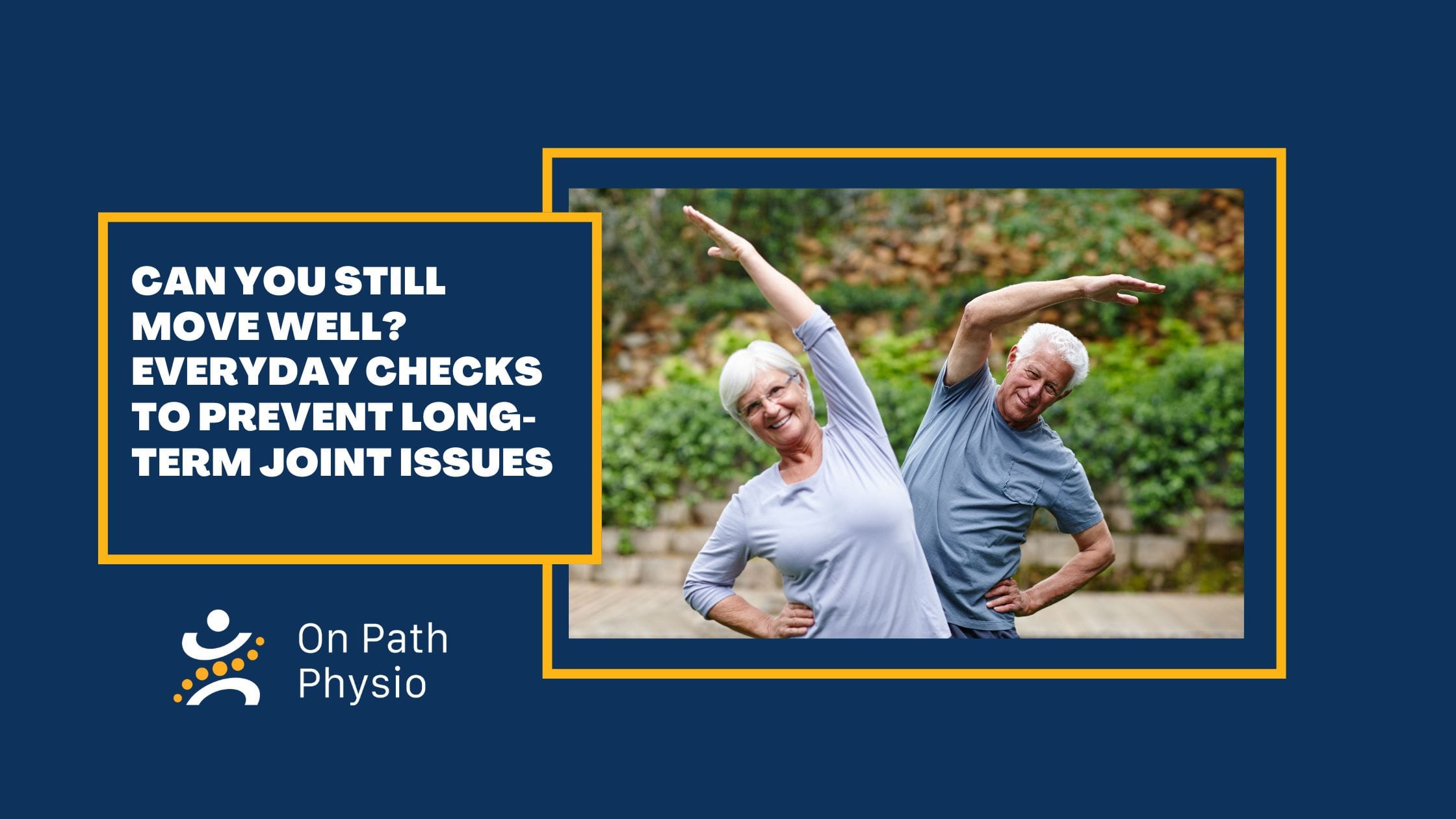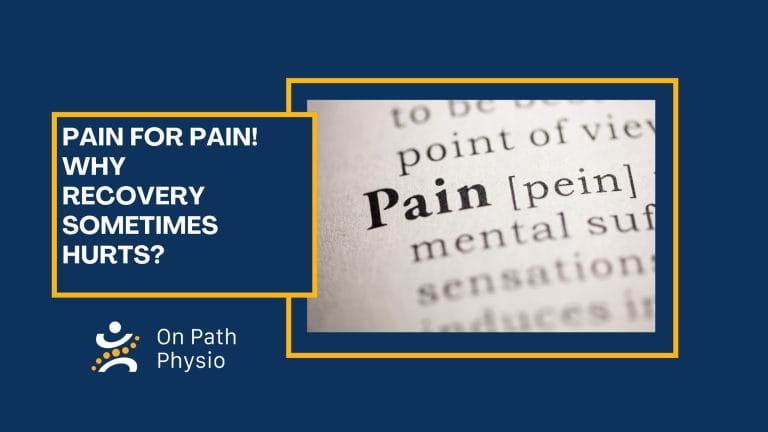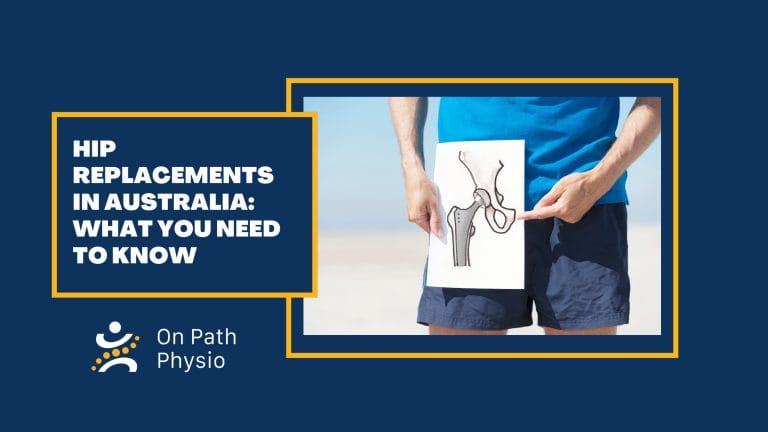Prefer watching instead of reading? Check out the video summaries of this post on our social media platforms linked below.
Arthritis can creep up slowly over the years, affecting how we move, function and feel each day. One of the most common forms, osteoarthritis, typically targets our larger joints especially the hips and knees. But the good news? Staying flexible and mobile in daily life can help prevent or delay many of these problems.
Here are a few functional tasks you can use as a self-check. These everyday movements can highlight whether you’re keeping your joints healthy or if it’s time to make some changes.
1. Walking – Are Your Knees Doing Too Much?
As we age, our spine can gradually curve forward, shifting our centre of balance. This often leads to a subtle habit: keeping the knees slightly bent when walking. Over time, this adds strain to the leg muscles and may contribute to chronic knee pain.
You can’t completely stop the spine from changing, but you can keep an eye on your posture. Ask yourself:
- Can I fully straighten my knees and hips while walking?
- What about when lying flat in bed?
Maintaining this range is key to keeping pressure off your joints.
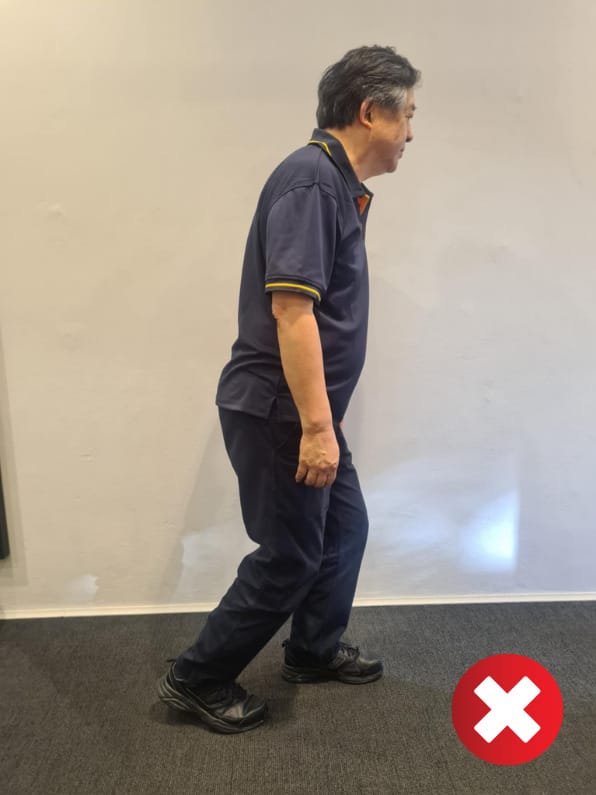
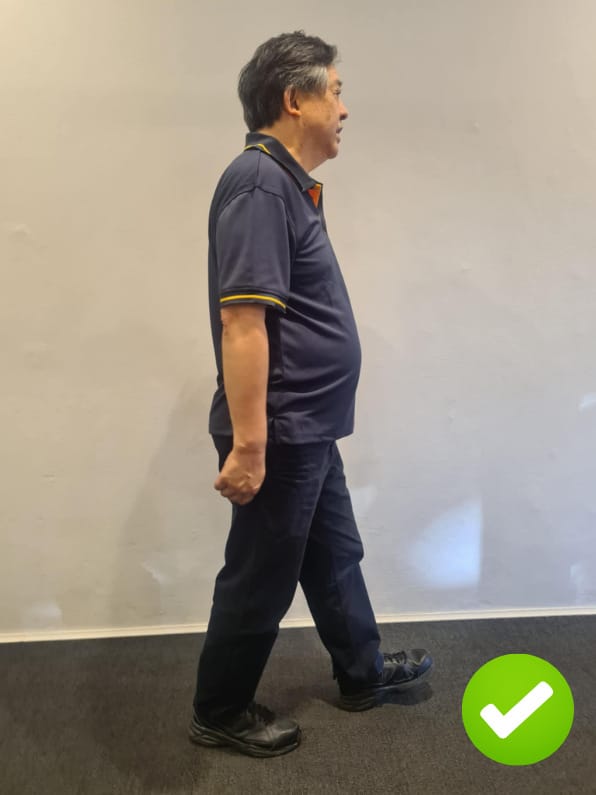
2. Squatting – Can You Reach the Floor Without Bending Over?
Whether it’s picking something up off the ground or tying your shoes, bending forward can strain your lower back. Instead, we should squat — but not the gym kind!
Try this at home:
- Can you squat all the way down to pick something up?
- Was it easy to get back up?
If it was tough, you’re not alone but it’s worth practising. Improving your squat will protect your back and improve leg strength.
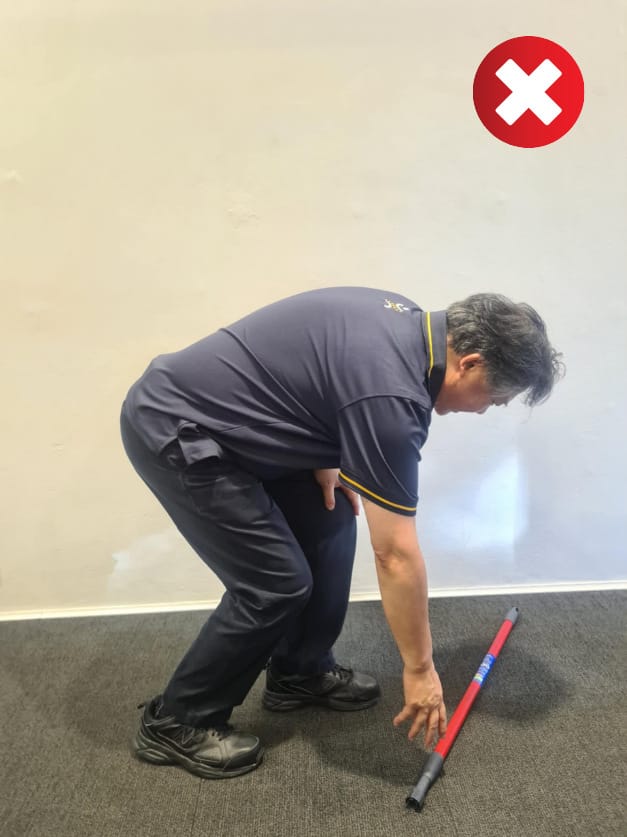
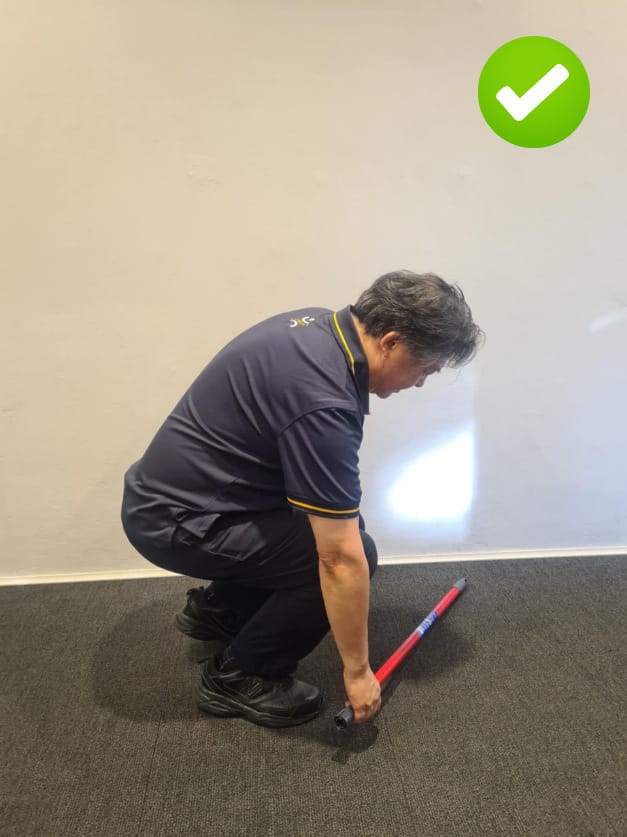
3. Sitting Cross-Legged – A Hip Flexibility Test
Hip flexibility is a big deal it affects how easily we get in and out of cars, chairs and even our clothes.
Try this:
- Sit on the floor with your legs crossed.
- Are your knees high (tight hips) or close to the floor (good flexibility)?
- How hard was it to get back up?
This simple check says a lot about your hip health and mobility.


4. Sit to Stand – Strength, Momentum, and Control
Standing up from a chair isn’t just about strength it’s also about movement and balance.
Try this tip:
- Slide to the front of the chair.
- Lean forward from the hips and push up through your legs in one motion.
Going too slowly can make it harder, while controlled momentum helps you stand more easily. As a benchmark, being able to do 10 sit-to-stand repetitions without support is a good sign of leg strength and control.
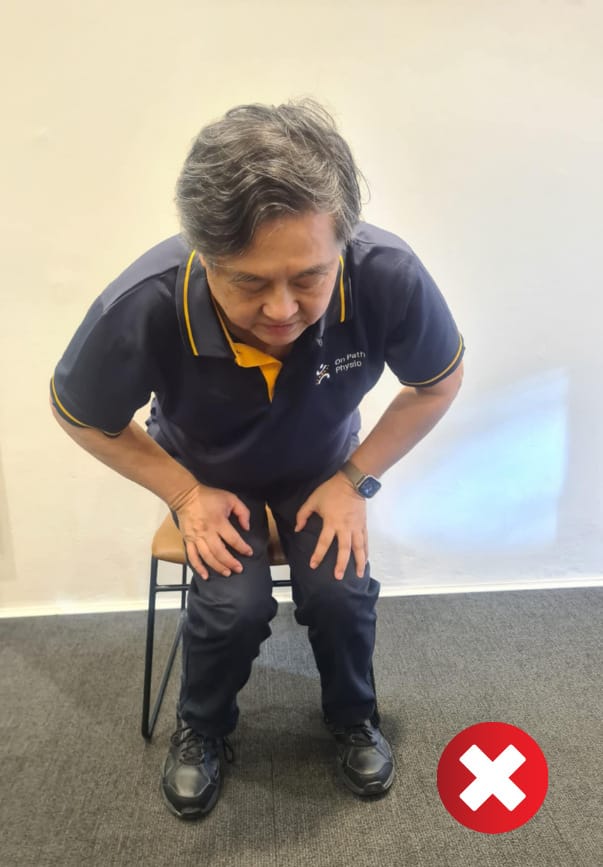
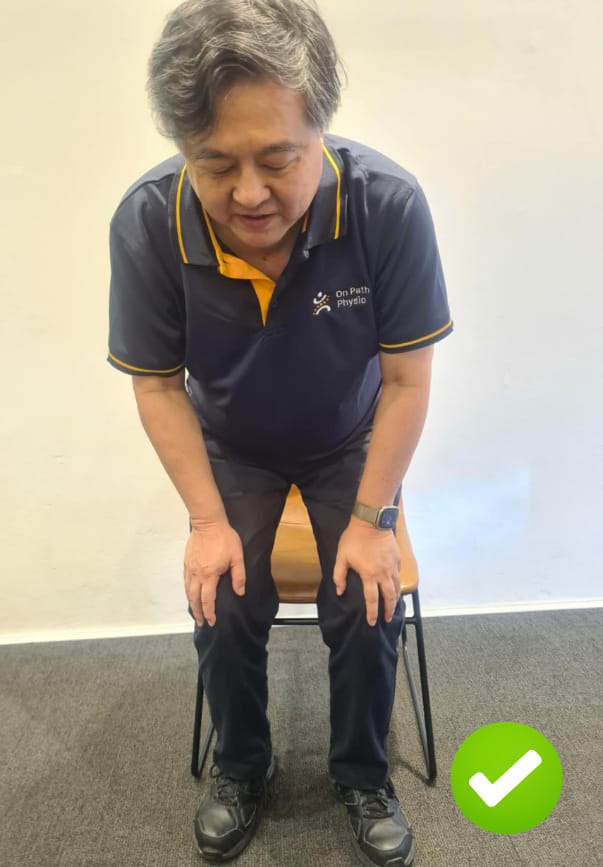
5. Getting Up Off the Floor – Your Safety Check
This one’s more than a test it could save your life. Imagine collapsing at home could you get up from the floor without using a chair or table?
Try this:
- Lie down on the floor and attempt to get up using only your arms and legs.
- If it’s difficult, it’s time to work on this skill.
Practising this regularly even once a week builds confidence, strength and prepares you for unexpected situations. It’s also a great way to explore your movement limits safely.
Need Help Improving Your Movement?
If you’re unsure about how you’re performing or feeling concerned about your mobility, we’re here to help. On Path Physio offers personalised assessments and practical strategies to help you stay On Path for a healthier life.
Book a consultation today to start taking control of your joint health and future mobility.
Prefer watching instead of reading? Check out the video summaries of this post on our social media platforms linked below.

